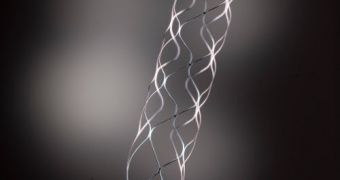This March, the US Food and Drug Administration (FDA) approved the SOLITAIRE Flow Restoration Device for use on humans. The instrument, which may soon enter mainstream use, is capable of eliminating the blood clots that form in the brain, and help trigger strokes.
Blocked arteries are the primary reason why strokes occur in the first place. Blood flow to certain areas of the brain is blocked, which essentially starves these regions out. Eventually, the lack of oxygen and nutrients kills off those neurons.
Scientists figured out some time ago that mechanical devices can be used to clean out arteries. The purpose of SOLITAIRE is to enter the brain and then remove all possible blockages from arteries.
If used preventively at a large scale, the device has the potential to reduce the overall incidence of stroke in the general population significantly. Currently, statistics show that this condition is the fourth leading cause of death, and one of the most common causes of permanent or long-term disability.
Recently, scientists carried out the SOLITAIRE With the Intention for Thrombectomy (SWIFT) trial, which sought to assess the performances of the new instrument against those of existing technologies.
Details of the work appear in the August 26 online issue of the esteemed scientific journal The Lancet, and will also be published in an upcoming print issue of the magazine.
The team that created the instrument says it has a stent-like design and features a self-expanding structure. Upon being introduced near a blood clot, the device is capable of capturing, compressing and trapping the blockage, allowing blood to flow through.
A small catheter is used to insert SOLITAIRE at a specific site, to manipulate the device, and also to withdraw it (and the captured clot). “This new device is significantly changing the way we can treat ischemic stroke,” says Dr. Jeffrey L. Saver.
The expert, who was the lead author of the new paper, is the director of the Stroke Center at the University of California in Los Angeles (UCLA), and also a professor of neurology at the David Geffen School of Medicine.
“We are going from our first generation of clot-removing procedures, which were only moderately good in reopening target arteries, to now having a highly effective tool,” the expert goes on to say.
He concludes by saying that a whopping 87 percent of all strokes are caused by blood clots. Therefore, using SOLITAIRE definitely has the potential to save millions from death and long-term disability.

 14 DAY TRIAL //
14 DAY TRIAL //